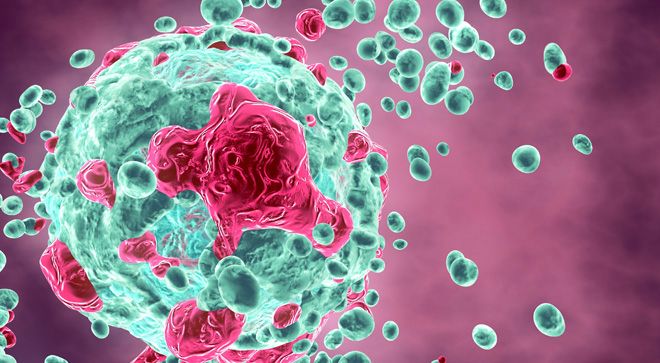News
Article
Lifileucel Is Efficacious in Advanced Mucosal Melanoma
Author(s):
A phase 2 study evaluated meaningful activity from lifileucel for patients with advanced mucosal melanoma who experienced disease progression on immune checkpoint inhibitors.
Clinical trial data showed that lifileucel was efficacious in treating mucosal melanoma that progressed on immunotherapy.

Lifileucel led to improvements in response rates in patients with advanced mucosal melanoma who experienced disease progression on immune checkpoint inhibitors, according to findings from a recent phase 2 C-144-01 study, presented during the 2023 ESMO Congress.
At a median follow-up of 35.7 months, patients who received the tumor-infiltrating lymphocyte therapy (12 patients) experienced an objective response rate (ORR; the percentage of patients who achieve a response) of 50%, including one patient who achieved a complete response (CR; when the cancer can no longer be detected). Four patients had stable disease and two had disease progression (PD).
Notably, at the July 15, 2022, data cutoff, four of the six responders had durable and ongoing responses.
“Advanced mucosal melanoma is rare and difficult to treat, with poor outcomes after anti–PD-1 therapy,” Dr. Evidio Domingo Musibay, an assistant professor of medicine in the Division of Hematology, Oncology and Transplantation at the University of Minnesota Medical School in Minneapolis, said during the presentation. “ORRs tend to be low at 19% to maybe 23% (with a) median overall survival (OS) of 11.3 to 16.0 months. (In a previous study), lifileucel autologous tumor-infiltrating lymphocyte therapy demonstrated an ORR of 31.4% in heavily pretreated patients (153 patients) with advanced melanoma.”
C-144-01 was a multicenter trial that enrolled patients with unresectable or metastatic stage 3c or 4 melanoma who progressed on or after anti–PD-1 therapy. Patients needed to have an ECOG performance status of one or less (indicating that they could perform all of their daily tasks with little to no assistance), an estimated life expectancy of at least three months and adequate organ function in order to be eligible for the study. Patients who received an organ allograft or prior cell transfer therapy, had symptomatic and/or untreated brain metastases, or had BRAF-mutated disease and did not receive prior therapy with a BRAF inhibitor, were excluded.
Following tumor tissue procurement and cell manufacturing which took approximately 22 days, patients received a nonmyeloablative lymphodepleting regimen with cyclophosphamide from day -7 to day -6 followed by fludarabine from day -5 to day -1. Patients received lifileucel infusion on day 0, followed by IL-2 on day 0 to day 4. After the end of treatment, the efficacy follow-up lasted until patients experienced PD or started a new therapy.
The primary endpoint was ORR. Secondary end points included duration of response (DOR), disease control rate, progression-free survival, overall survival and incidence of side effects.
At baseline, the median age was 61.5 years (range, 37-79) and the median number of prior lines of therapy received was two (range, 1-6). Most patients had disease that was primary refractory to anti–PD1/L1 treatment (83.3%), 41.7% had liver or brain metastasis and 41.7% had lactate dehydrogenase levels above the upper limit of normal, indicating that they may have organ damage. The median number of target and nontarget lesions was six (range, 3-13) and the median target lesion sum of diameters was 118.9 mm (range, 20.7-260.9).
The median number of IL-2 doses was 5.5 (range, 3-6).
Additional findings from the study demonstrated that the median DOR was not yet reached. All patients experienced a DOR lasting at least 6 months, 83.3% had a DOR of 12 months or more and 66.7% had a DOR spanning at least 24 months.
Data from a sub-analysis revealed that the mean tumor mutational burden of patients with mucosal melanoma was low compared with those with cutaneous disease, at 2.145 mut/Mb vs 10.47 mut/Mb, respectively. Moreover, tumor-infiltrating lymphocyte persistence was similar in both groups of patients through one year.
In terms of safety, grade 3/4 nonhematologic treatment-emergent side effects consisted of febrile neutropenia (58.3%), hypotension (33.3%) and hypoxia (16.7%). The most common any-grade side effects included chills (75.0%), febrile neutropenia (58.3%), diarrhea (58.3%) and fever (41.7%). Regarding grade 3/4 hematologic laboratory abnormalities, all patients experienced neutropenia, leukopenia, lymphopenia and thrombocytopenia and eight patients experienced anemia.
“The antitumor responses observed in mucosal melanoma were consistent with responses observed in the overall population,” Domingo-Musibay said. “Treatment-emergent side effects were consistent with the known safety profiles of nonmyeloablative lymphodepletion and high-dose IL-2. These results further support the potential benefit of lifileucel as a one-time treatment that is differentiated from other immunotherapies.”
For more news on cancer updates, research and education, don’t forget to subscribe to CURE®’s newsletters here.





